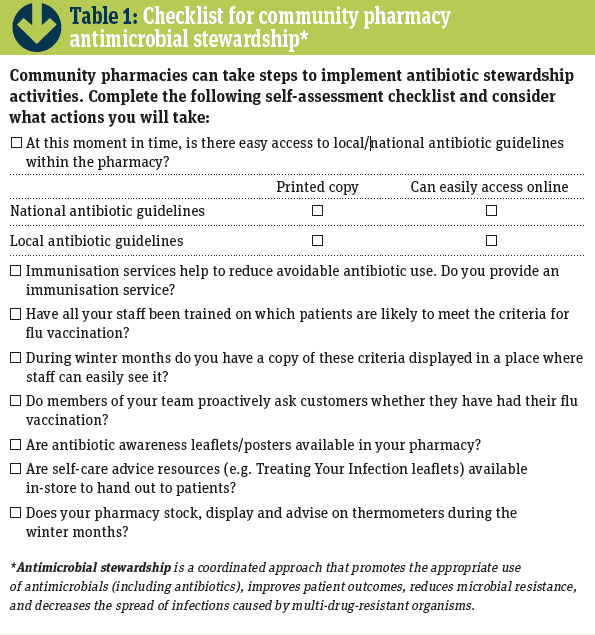
Community pharmacists and their teams are well placed to provide advice for patients with self-limiting infections. Promoting self-care and managing patient expectations by explaining the likely duration of self-limiting infections (see Key Resources later) and the symptoms that require medical attention are also important contributions.
For instance, one-third of the public believe that antibiotics will treat coughs and colds and one in five people expect antibiotics when they visit their doctor. Self-care advice that can also be offered to the public includes:
- The importance of getting plenty of rest and drinking enough fluids to avoid feeling thirsty
- Taking paracetamol (or ibuprofen where appropriate) for pain relief or to relieve a fever
- Protecting themselves and others against colds and flu (e.g. vaccination; hand washing to prevent spread of viruses; using paper tissues and carefully disposing of them)
- Avoiding smoking or being in a smoke-filled environment.
Red flags
‘Red flags’ that indicate a patient should seek urgent assessment include:
- Persistent raised temperature (39°C and above) for longer than three days
- Severe headache with vomiting or severe earache
- Coughing up blood/blood stained mucus on more than one occasion
- Chest pain
- Difficulty in breathing or swallowing
- Unusual skin rash
- Confusion, slurred speech, drowsiness.
If a child under the age of five years has any of the following symptoms, parents should be advised to go to A & E immediately or call 999:
- Skin is very cold or has strange colour or an unusual rash develops
- Confusion, slurred speech or very drowsy
- Difficulty breathing. Signs can include: breathing quickly; turning blue around the lips and the skin below the mouth; skin between or above the ribs getting sucked or pulled in with every breath.
